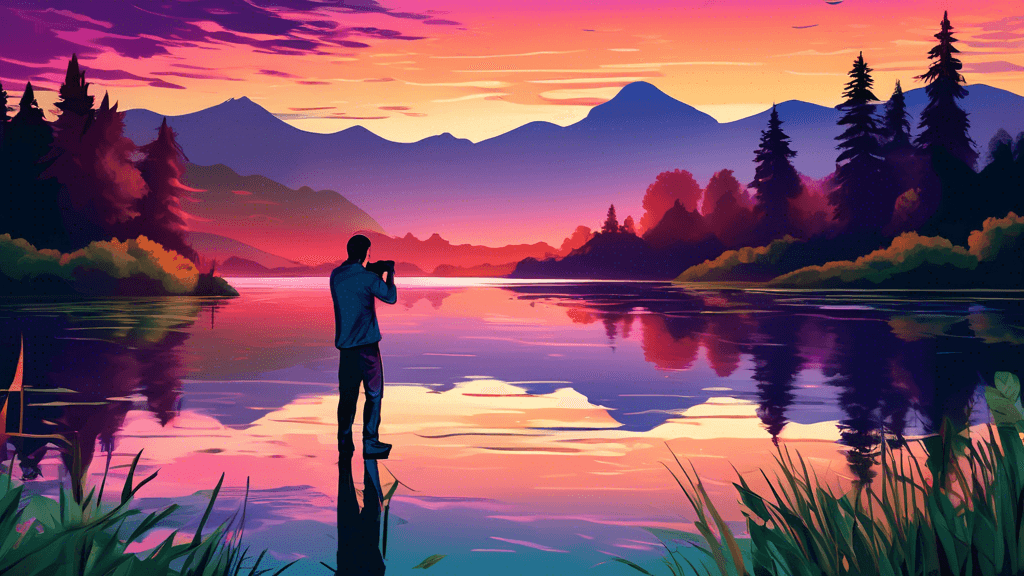
Capturing the Glow: Reflective Water Photography at the Lakeside
Share
Understanding the Allure of Lakeside Reflective Water Photography
Why do photographers flock to lakesides with their gear at dawn or dusk? The answer lies in the magical interaction between light, water, and the serene landscapes that lakesides offer. Reflective water photography is not just a style; it's an art form that encapsulates the ethereal beauty of nature, presenting photographers with a chance to capture the world in doubles - sky and land tethered together by a mirror-like surface.
The Basics of Reflective Water Photography
At its core, reflective water photography involves capturing images where the water surface reflects skies, landscapes, or objects, creating a symmetrical composition that can profoundly enhance the visual appeal of a photograph. But what makes lakesides so special for this type of photography?
- Calm waters: Lakes often provide calmer surfaces compared to oceans, making them ideal for clear, mirror-like reflections.
- Natural surroundings: The scenic edges of lakes often feature trees, mountains, or grasses that frame photographs beautifully and add depth to reflections.
- Light conditions: The lower light levels at dawn and dusk reduce the contrast and allow for a more balanced exposure of both the reflection and the real scene.
Equipment and Settings: Getting the Shot Right
What does one need to capture these mystical reflections effectively? First and foremost, selecting the right equipment is crucial.
- Camera: A DSLR or a mirrorless camera with manual settings is ideal. This allows for more control over the exposure, which is critical in managing the varied lighting conditions typically found during these times.
- Lens: A wide-angle lens helps in capturing the expansive beauty of the landscape along with its reflection. A lens with a focal length between 24mm to 70mm is typically recommended.
- Tripod: Stability is key in low-light conditions and long exposure times; hence, a sturdy tripod is indispensable.
- Filters: A polarizing filter can enhance water reflections by reducing glare, while neutral density filters allow for longer exposure times without overexposing the shot.
Setting the right settings involves:
- Lower ISO: To ensure the finest image quality with the least amount of noise.
- Narrow Aperture: An aperture of f/8 to f/16 generally offers a good depth of field, keeping both the foreground (water) and the background (landscape) in focus.
- Shutter Speed: Depending on the desired effect on the water’s surface, speed can vary. Slower shutter speeds are used to create a silky-smooth effect on the water.
Composition Techniques: Beyond Just Technicalities
While technical proficiency is essential, artistic composition determines the emotive power of the photograph. Consider the following compositional techniques:
- Rule of Thirds: Place key elements like the horizon along the lines to create a balanced composition.
- Leading Lines: Use the lake's shorelines or features like jetties to guide the viewer's eye into the scene.
- Symmetry: In reflective photography, symmetry can be a powerful tool. Positioning the horizon in the middle of the frame can exploit the mirror effect of the water.
The Ethical Perspective and Environmental Considerations
With the increasing popularity of lakeside photography, it's also vital to mention the ethical and environmental aspects. Iconic locations can suffer from overtourism, which may lead to environmental degradation. Photographers must practice principles of Leave No Trace, such as:
- Staying on designated trails to avoid disturbing native flora.
- Packing out all trash, including micro-trash like lens caps or filter wrappers.
- Respecting wildlife by keeping an appropriate distance and not luring animals for photographs.
- Sharing spots responsibly on social media to avoid contributing to over-tourism.
Conclusion and Call to Action
Lakeside reflective photography not only allows us to capture breathtaking images but also to connect deeply with nature. It compels us to wake up before dawn, to feel the morning dew, and to witness the first golden rays of sun as they touch the still waters of a lake. Are you ready to capture these sublime moments, to respect and preserve the natural beauty for generations to come?
So grab your gear, respect your surroundings, and lose yourself in the enchantment of lakeside photography. Remember, each photograph not only captures a moment in time but also tells the story of the interplay between human perception and the raw beauty of the natural world.





